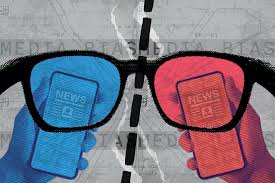Few things are worse for us in PR than watching a brand crisis or disaster blow up online for all to see. One minute, a company is doing fine; the next, its name is getting dragged through the mud as a PR nightmare unfolds in real-time. We’ve all seen beloved brands get piled on via social media.
Often, these viral PR disasters could have been prevented or contained with better preparation and crisis communications. But today, one bad tweet or video is all it takes for a brand’s reputation to get destroyed in an instant.
To help you avoid situations like these, I will go over some of the worst recent PR disasters. It will show how big companies like United Airlines, Uber, and BP allowed small issues to become catastrophes due to poor crisis planning and response. These examples show just how costly and damaging a public mess can be.
I’ll break down where these brands went wrong so you can learn what not to do. More importantly, you’ll understand the proactive strategies needed to put out fires before they erupt into uncontrollable online storms.
Let’s get started…
Key Points
- Public relations crises are significant because they have the potential to damage your small business’s reputation among clients
- Collaborating with a publicist can enhance your ability to craft and deliver effective communications, ensuring you respond appropriately during a crisis.
- It’s essential to consciously align your actions with your values and the image you wish to project, ensuring consistency in how your brand is perceived.
- Always prioritize the well-being and safety of people before business considerations—this should be a fundamental principle in any decision-making process.
What is a PR Crisis/Disaster?
I define a PR crisis or disaster as a situation when a company’s deliberate or inadvertent activities cause unfavorable public perceptions. The repercussions can be anything from financial penalties and legal troubles to harm to one’s reputation and loss of customer trust. Whether for a few days or even years, several crisis occasions have left a lasting influence on public perception of a brand’s image. Analyzing the inner workings of PR catastrophes might yield insightful knowledge on reputation management.
A PR crisis reverberates over the internet in today’s social media environment, making the process of recovery even more difficult than avoiding bad PR. Examining these incidents provides insights toward restoring control and keeping things from getting out of hand. Above all, it will demonstrate why your brand can be saved by having an already-made crisis management plan.
The Worst PR Disaster List of All Time
There are certain important professional lessons to be gained from PR disasters when looking at the “positive side.” Therefore, even though you might be inclined to look away from the embarrassing incident, you should closely monitor every decision the company takes and the public’s responses.
Here are four recent PR disasters that not only made us shudder but also served as a helpful lesson for all PR practitioners.
#1. Qatar’s World Cup
My Dad is a huge football fan. And up until the quarter World Cup in 2022, he had never missed a World Cup.
Can anyone honestly believe that holding a major international event in such a repressive nation was a smart idea? A nation that disregarded fundamental human rights? A nation that kills anyone who appears to be a member of the LGBTQ+. Community or that persecutes anything considered “Westernized”?
The committee endangered athletes, event planners, staff, and spectators.
I’ve read that Qatar insisted that beer be prohibited from stadiums just days before the first ball was kicked. Budweiser, a principal sponsor of the competition since 1986, observed that millions of bottles intended for spectators were missing overnight. The bottles were intended for supporters and consigned to shipping containers, never to partake in alcohol.
Who knew all this about a nation while sitting alone in their office, but still felt it was a good idea to have an international event there? Perhaps a high earner from the transaction?
What to Learn
Always remember that people come first! This is an obvious choice. Before money and cents, people’s health, safety, and well-being come first.
#2. Will Smith vs. Chris Rock
Who could overlook the Academy Awards of that event? Will Smith went momentarily mad on live air and gave Chris Rock a slap to remember.
I mean, it was repeatedly televised, and many people speculated as to whether or not it was real. While everyone was going crazy over the circumstances, I kept thinking, “Where’s Will’s publicist????”
Even worse, he was able to accept and provide an acceptance speech after winning “Best Actor.”
Everyone talked about the incident nonstop for weeks following it. Every blog, internet forum, talk show, you name it, everyone had an opinion on the subject. Forbes even interviewed lots of people to talk about Will’s next moves, but Will and his team said nothing. Only after losing fans and seeing his most recent film bomb at the box office for several months did he finally confront the situation.
What to Learn
To control the crisis narrative, you must move rapidly. If you don’t, people will be free to conjecture, and your silence will validate whatever they believe to be true. No matter how unpleasant (or embarrassing) it may be, the best course of action is to take charge of the situation right once by making a statement, speaking with the media, or organizing a conference. Working with a PR company can help you better understand what to say and how to say it.
#3. American Airlines Wacky Christmas
This right here was the one that blew my mind. Imagine planning a Christmas visit to your family only to arrive and find yourself stranded for hours or even days without any answers, recompense, or information. Between December 21 and December 31, Southwest canceled around 16,700 flights, leaving thousands of its once-loyal customers high and dry for the holiday season.
The corporation lost millions of dollars as a result of this, in addition to potential losses from consumers who would not make new reservations with them very soon.
According to what I’ve read, Southwest gave flight attendants premium pay and gave pilots $45 million in “gratitude pay” as a result of the crisis. For years, both bodies have issued advisories regarding insufficient technology and scheduling.
Additionally, the airline has given 25,000 Rapid Rewards points per person—worth an estimated $300—to about 2 million customers who booked flights during the hectic Christmas season.
What to Learn
Set up a crisis plan. When in crisis mode, you cannot be discovered attempting to “figure things out.” If a crisis seems likely to occur, pay attention to the people who are performing the task. Then, collaborate with a professional publicist to develop a sound, workable plan that will reduce the potential harm that a crisis can bring.
#4. The Debacle of Balenciaga
Although child pornography is never “hip” or “cool,” it appears that the Balenciaga team was unaware of this. In summary, one campaign showed kids carrying teddy bear backpacks with the bears outfitted in harnesses akin to S&M, while another contained copies of the 2008 ruling on child pornography by the Supreme Court.
The blowback was, indeed, quick, and severe!
Influencers backed out, celebrities severed relationships, and things quickly got worse.
They did release a statement, but it didn’t make things any better.
What to Learn
While pushing the boundaries is OK, glorifying illegal action goes too far. A publicist can advise you on what is clever and what is just plain dumb.
Checklist on How to overcome PR Disaster.pdf
Biggest PR Disasters
#1. Coca-Cola and Ronaldo
When it comes to celebrities and brands, even the most thoughtless and innocuous public activity can come out as deliberate and dramatic. Christiano Ronaldo made a simple play during a pre-match conference that lost Coca-Cola $4 billion in value. Water and two Coca-Cola bottles were on the meeting table. In an apparent attempt to encourage people to drink water, Ronaldo chose to take out the two Coke bottles and raise a glass of water. This was very funny,
But many people thought the act was deliberate. Online memes continued to be widely circulated even after the blow had been defused.
This instance demonstrates how a PR crisis can occasionally occur even when a brand is not directly engaged, but ignoring the issue will not resolve it. Coca-Cola issued a clear, concise statement saying, “Everyone is entitled,” following a decline in its value.
#2. Removal of Passengers on United Airlines
How many of you remember this incident? I do remember vividly because that very day, I had an early morning flight to catch and still waiting for my flight to be announced. My phone beeped, and the news was all over the internet; it was so embarrassing. When the airline asked for volunteers to get off an overbooked flight, Dr David Jao and his wife first agreed to board a later trip. However, when they learned that the next departure wasn’t until the following day, they quickly changed their minds. Security was called to the airport because they would not leave.
He was shown being carried down the aisle and removed with force in videos of the incident that went viral online.
The force utilized surprised the people.
There were calls for a boycott. Some others posted images of their torn-up United Airlines loyalty cards on social media. The two security personnel were laid off.
#3. Ticketmaster and Taylor Swift
Taylor Swift revealed her much-awaited “Era’s Tour” in 2022, and Ticketmaster was given the task of handling ticket sales. Millions of devoted fans were left without the opportunity to acquire tickets when the corporation abruptly announced that it would no longer be selling tickets to the general public. Instead, buyers would need to deal with presale codes and purchase windows. Even for the fortunate few, the experience was difficult. Many experienced difficulties that resulted in hours of waiting and hundreds of dollars worth of ticket purchases.
#4. The BP Oil Spill
In addition to being a financial and environmental catastrophe, the 2010 BP oil spill in the Gulf of Mexico was also a terrible PR disaster for the oil giant, particularly in terms of how it handled media relations in the wake of the incident. The cry “I want my life back” came to represent the shortcomings and callousness of BP and its CEO at the time, Tony Hayward. It was said when Hayward casually said, “No one who wants this thing over more than I do, I’d like my life back,” to the media to convey his desire for the crisis to end. I apologize.
It makes sense that the public was shocked and outraged.
By now, the tragedy has resulted in fatalities, severe environmental damage, and rising.
At best, his remark appeared self-centered and, at worst, callous. BP attempted in vain to minimize the environmental impact of the leak, underestimating the harm it did. A few months later, Hayward “left” BP. Since then, BP’s reputation has changed significantly.
#5. Chinese Dolce & Gabbana Ad
Fashion brand Dolce & Gabbana, which was looking to take its brand global, published a series of advertising ads featuring a Chinese woman trying to eat pizza with chopsticks, which caused a lot of anger. The brand’s name is also pronounced incorrectly in the video series, mocking the way Chinese people say “Dolce & Gabbana.” After that, there was uproar when a fashion blogger leaked purported messages in which designer Stefano Gabbana made fun of China. Social media users took offense at this attempt to capitalize on Chinese culture, and Weibo, a Chinese blogging platform, saw a spike in reactions to it.
As a result of the #boycottdolce craze, many Chinese stars and models pulled off the runway.
How to Manage a PR Disaster
Each company ought to have a PR crisis or disaster response team and strategy in place. But just in case your company doesn’t, here are a few suggestions for storm-navigating.

#1. Write Your Message Carefully
After gathering all the information on the occurrence, you and your team should decide on the best way to respond. Without blaming anybody else, consider the most open approach to handle the matter and the actions your organization has taken or plans to take in response.
In my research, I read through the story of Joe Culotta, the United Soccer League’s director of communications, who stated that being straightforward and honest with your audience is the best way to manage a critical situation. “People will be more willing to forgive you if you acknowledge your error and apologize right away. Additionally, people will cease disparaging you on social media sooner if you address the issue quickly.
#2. Assign a Reaction Group
Your company ought to have a reaction team in place before a crisis arises. It’s important to establish a reaction team as soon as possible during a crisis to ensure the appropriate individuals are representing your business.
When multiple people start speaking on the organization’s behalf, it becomes difficult to react quickly and speak with a single voice. The most successful teams include both inside specialists with an in-depth understanding of the business and outside specialists with journalistic insight into the situation.
#3. Keep an Eye on the Circumstances
After a PR disaster, it’s crucial to evaluate your brand’s image. To respond to any complaints or follow-up queries, you will need to monitor both incoming and outgoing communications.
Monitoring what others are saying about your business online is also crucial. A Moz analysis found that businesses risk losing 22 per cent of their business if just one unfavorable article appears on the first page of search results. Check for any unfavorable user-generated content on Google Images, social media, review websites, and even your website.
Understanding what different audiences and stakeholders are saying about a business at any one time is crucial to effective crisis communications.
I recommend implementing monitoring tools that can identify unfavourable trends quickly before they escalate and reach the media. Additionally, Keep an eye on rivals, influencers, and the company’s brand and crisis keywords.
#4. Create a Plan and Inform Your Group of It
The following protocol is crucial to managing your crisis communications activities effectively. Each member of your response team should be aware of their roles and be able to decide whether to cover the situation in the media proactively or reactively.
The business needs to communicate protocol to everyone who might be contacted to speak on their behalf, regardless of the approach taken
This entails informing every staff member, interested party, board member, etc., who will be speaking with the media and where to address any questions. By doing this, the business will avoid subsequently having to defend any remarks made by unofficial corporate representatives.
#5. Determine Who is Impacted and Address Them
In the company where I work, we list the individuals—employees, stakeholders, business partners, customers, and the media—who require information about the problem. The audience will vary depending on the circumstances, but you should always send your message on time, no matter who is receiving it.
Contact well-known and cordial press contacts who are likely to present the news in a positive or balanced light with messages or a press release. However, press releases and comments should be ready to go before reporters approach you, as media outlets like to pick up news quickly once it breaks.
What is a PR Disaster?
Any unfavorable incident or review about your company that becomes widely known is considered a public relations crisis. It might be associated with an unsafe business practice, an incident involving a customer at your place of business, or an internal staff matter.
What Does PR Mean?
Public relations (PR) is the management of people’s opinions and perceptions of a person, brand, or business. The goal of PR for businesses, especially those that are publicly listed, is to uphold a favorable company image while responding to questions from the media and shareholders.
How Do You Recover From a PR Disaster?
- Examine the damage.
- Speak with investors and stakeholders.
- Create a strategy for your media communications campaign.
- Be Open and Honest
- Modify Your PR Approach.
Conclusion
Learning from the mistakes of others is always preferable to making your own. Luckily, there are lots of mistakes that fledgling companies can learn from. One essential component of an effective PR strategy is crisis management.
Nonetheless, when it comes to damage management, a few of the largest corporations in the world have failed.
Related Articles
- 7 Effective PR Strategies & How to Create One in 2024 (+ Template)
- How to Do Social Media for Nonprofits (All You Need)
- Media Training Tactics for Business Success: Elevate Your Communication Skills for Unbeatable Presence
- Best Steps To Effective PR Crisis Management
- Building an Effective Crisis Management Plan for Your Business






